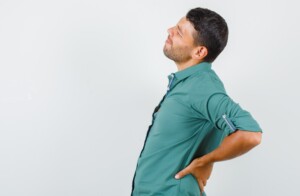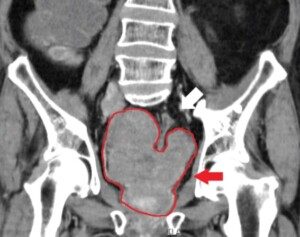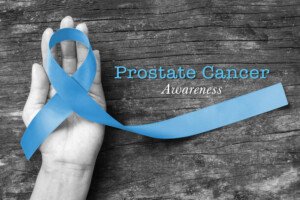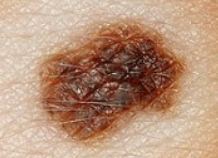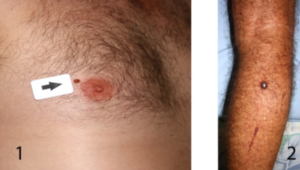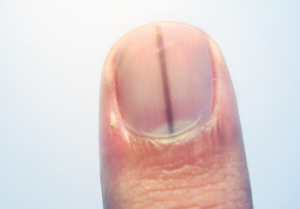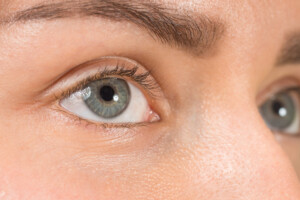
There’s many things you may still not know about your chronic rotator cuff pain, very common among both gym enthusiasts and sedentary people.
Rotator cuff tears can result from a traumatic injury or develop slowly over time.
Most degenerative tears occur in the dominant arm of people over 40, and this becomes more common as people age.
Conservative treatments such as physical therapy are typically the first approach to treating rotator cuff tears, but surgery may be considered when conservative treatments fail.
Dr. Nitin Jain, a professor at the University of Michigan Health and chair of the Physical Medicine and Rehabilitation Department, discusses the various treatment options for rotator cuff tears in the New England Journal of Medicine (2025).
Symptoms of a Torn Rotator Cuff
A non-traumatic (non-acute) or degenerative (over time) rotator cuff tear will cause shoulder pain that seems to arise out of nowhere, but can also predictably be triggered by certain motions.
Certain activities can worsen the pain as the tear grows.
• Sleeping on the affected shoulder
• Overhead activities (overhead barbell, dumbbell or weight machine press, placing weighted items on a high shelf)
• Pressing exercise including the dumbbell press, seated chest press and pushup
• Side-lifting exercise, namely, raising weights with arms out to the side (lateral raise)
• Any lifting above shoulder level, which may include just one’s arm without holding anything of substantial weight — such as hanging clothes.
• Placing the affected shoulder/arm into a coat sleeve
• Miscellaneous motions such as reaching into the back of your car while in the driver’s seat.
• Other motions include hooking a bra strap, tucking in the back of a shirt, styling the back of one’s hair, raising a baby above shoulder height, throwing or overhead serving motions in sport, and retrieving even a light object from a high shelf.
• A classic presentation of RC pain is that it radiates to a little lower than where the actual injury is located. A common pain location is the side of the mid to upper area of the upper arm.
Normally, rotator cuff injuries do not affect the ability to carry from a low height (e.g., suitcase, garbage bag) or perform pulling motions such as a seated row with an underhand or neutral grip, or the barbell deadlift exercise.
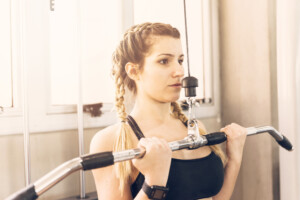
An underhand grip pull-down usually won’t aggravate a rotator cuff problem. Freepik.com
Some people may experience little to no pain despite having larger tears, while others with smaller tears may experience significant pain.
A tear can impact both the active range of motion and strength of the shoulder.
Rehab and Physical Therapy for Rotator Cuff Tears
Rehabilitation through physical therapy is the most common treatment for rotator cuff tears.
Surgery should not be a “jump the gun” response when you hear “tear” from your physician.
According to Dr. Jain, the first point of referral should be a physical medicine and rehabilitation doctor (physiatrist) or a sports medicine doctor.
The rehab process often focuses on strengthening the muscles surrounding the shoulder, improving posture and addressing weaknesses in the scapular (shoulder blade) region.
Several observational studies, as reported in Dr. Jain’s paper, show that more than 80% of patients who do supervised PT report significant improvements in pain relief and shoulder function after six months to a year.
That may sound like a very long time, but it’s actually par for the course for a rotator cuff tear.
Though I’ve never had an MRI of my shoulders, I’ve had multiple recurrences of rotator cuff strain in both shoulders throughout my weightlifting life.
Every single time, it took at least six to 18 months to “get everything back.”
For me, this meant pre-injury strength prior to an acute injury such as when I was doing cable crossovers.
The rotator cuff consists of four tendons that attach to four muscles. Tendons simply take a long time to heal properly.
My getting everything back included performing standard strength training movements, though with very light resistance, and very gradually increasing the weight over time.
Patience is key. You absolutely should NEVER try to “work through” rotator cuff pain!
Of note is that the observational studies involved patients with a range of rotator cuff injuries that did not, such as with myself, require advanced imaging to confirm the diagnosis.
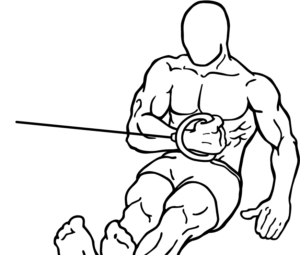
A common PT for rotator cuff recovery: internal rotation using a resistance band. Everkinetics/Wikimedia
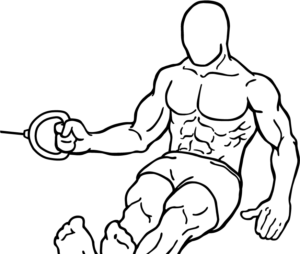
In the observational studies, the more that patients actively participated in their therapy regimen, the better the results tended to be.
Patience and consistency are virtues when it comes to restoring normal function in the rotator cuff.
Non-Drug Therapies for Rotator Cuff Tears
According to this study, non-drug therapies such as manual and massage, acupuncture and shock-wave, have not been shown to have significant benefits for rotator cuff disorders.
The lack of high quality trials supporting these methods means that their effectiveness for this condition remains unclear.
Medications and Injections for Rotator Cuff Tears
Topical (surface) treatments have not been proven to be highly effective.
Glyceryl trinitrate, a topical treatment, showed some short-term benefits in a small trial, but the study for that revealed considerable bias among participants, which calls into question its true effectiveness.
Topical nonsteroidal anti-inflammatory drugs (NSAIDs) like diclofenac and ketoprofen have been useful for pain relief in chronic musculoskeletal pain.
While they have a better safety profile than oral NSAIDs like naproxen, research supporting their use for torn rotator cuff pain is still limited.
I myself never took any oral drugs for my bouts of rotator cuff problems.
I relied solely on physical therapy and very gradual increases in resistance when performing my standard exercises such as the dumbbell press (it’s humbling to be using 5-pound dumbbells for this, but I had to do it this way and shove my ego into the back of the drawer).
Oral NSAIDs have been shown to provide only modest pain relief for an injured rotator cuff.
Plus, their effects aren’t long-lasting, and possible effects of long-term use are always a concern.
Opioids are generally not recommended due to their high potential for addiction and the lack of evidence supporting their superiority over non-opioid therapies.
Other drugs, such as acetaminophen and pain-modulating medications like gabapentin, duloxetine and pregabalin, have shown little benefit for rotator cuff pain.
Glucocorticoid injections, often combined with a local anesthetic, have shown benefit.
I once had this done, and the benefit was noticeable fairly soon after, but it wore off, and I felt as though this didn’t actually induce any repair for the problem, like actual PT and very light and careful strength training would.
These injections can provide temporary pain relief, especially for those with subacromial impingement syndrome.
Small studies suggest that these injections may relieve pain for about four weeks.
Using ultrasound to guide the injection can reduce the risk of incorrect placement into the tendon.
Surgical Interventions for Rotator Cuff Tears
Surgical intervention is not recommended as the first option for a rotator cuff tear.
If a physician is quick to recommend this, you should be very leery and seek a second opinion.
This happened to my mother. One minute, she was diagnosed with a non-acute, degenerative rotator cuff tear via MRI.
Next minute, she had surgery scheduled. The pain remained chronic because she never adhered to the post-surgical PT, claiming that it hurt and was a waste of time.
- PT after surgery, even if it’s long-term, is absolutely crucial for a full recovery.
- Having surgery and then being good to go is NOT how it works.
Surgery should be considered only when the condition does not improve after conservative treatments.
Observational data, as reported in Dr. Jain’s study, suggests that surgery is particularly beneficial for patients under 65 and for those with smaller tears.
Rotator-cuff repair surgeries are typically performed arthroscopically, which involves using small incisions and a camera to guide the procedure (as was the case with my mother).
The torn tendon is reattached to the humerus (upper arm bone), allowing it to heal properly.
This method is associated with a low rate of complications.
Strength Training with a “Bad” Rotator Cuff
If you’ve been plagued by a stubborn rotator cuff but are also a strength training enthusiast, here are the 10 worst weightlifting exercises for a bad rotator cuff, ranked in order from bad to worst.
But it’s not the end of ALL weight workouts if you have a troublesome rotator cuff. Here are exercises you can do with a painful rotator cuff.
 Lorra Garrick is a former personal trainer certified by the American Council on Exercise. At Bally Total Fitness, where she was also a group fitness instructor, she trained clients of all ages for fat loss and maintaining it, muscle and strength building, fitness, and improved cardiovascular and overall health.
Lorra Garrick is a former personal trainer certified by the American Council on Exercise. At Bally Total Fitness, where she was also a group fitness instructor, she trained clients of all ages for fat loss and maintaining it, muscle and strength building, fitness, and improved cardiovascular and overall health.
.











